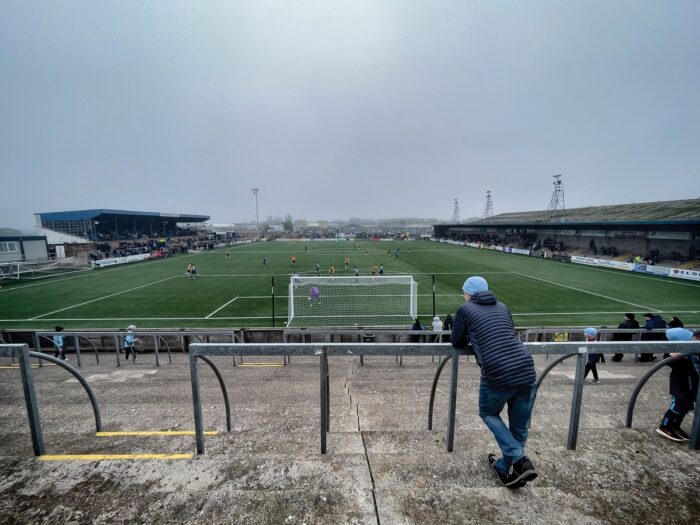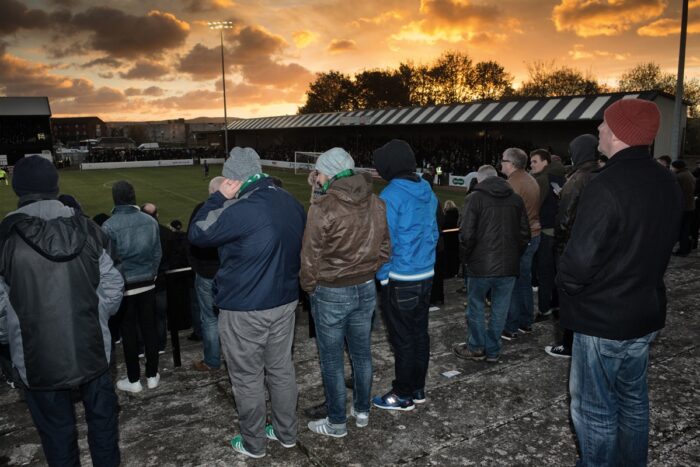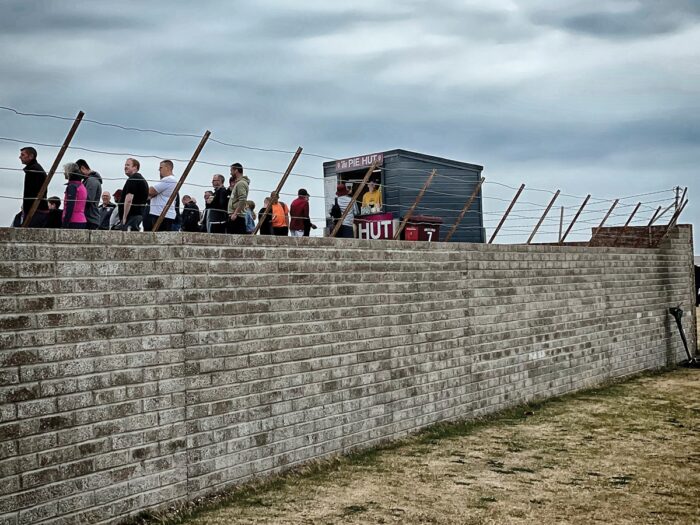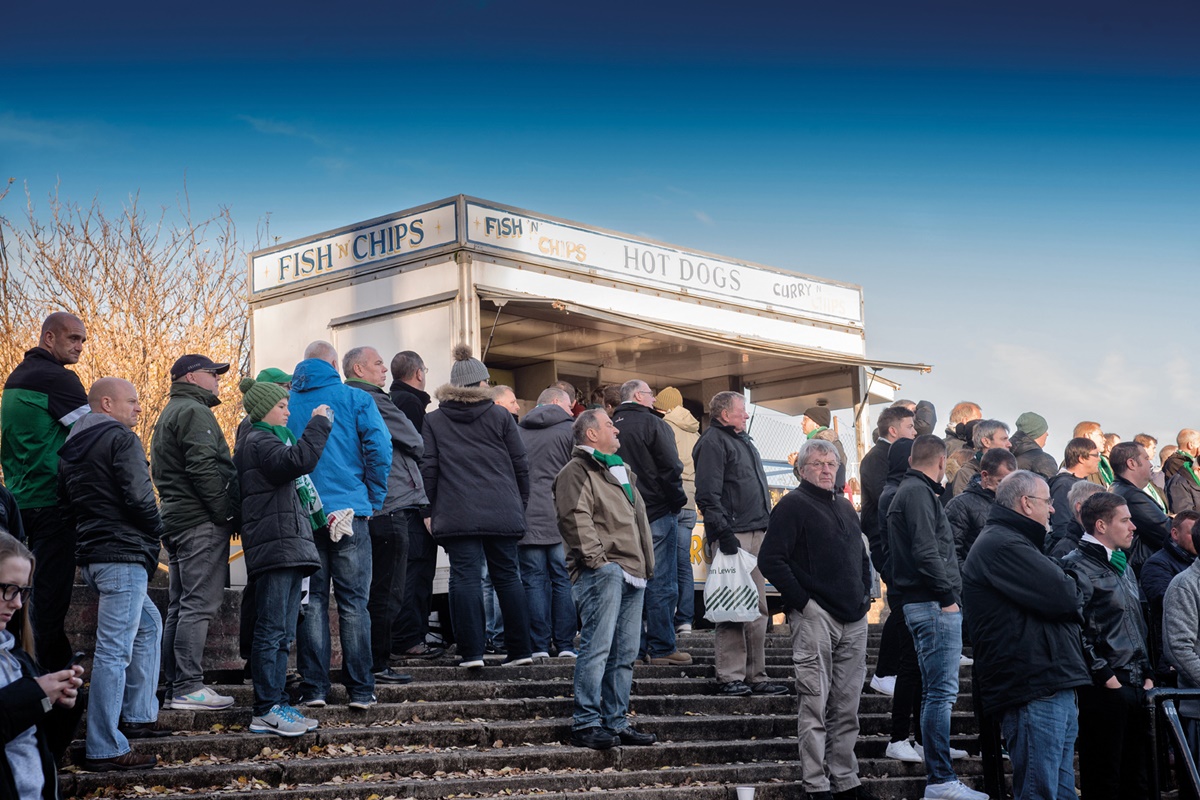September is always a harbinger of change. Summer fades into autumn, russets replace verdant greens and huge flocks of migrating swallows begin their odyssey south in a search for warmer climes.
A little short of ten years ago against this bucolic backdrop I was undertaking my own migration north (not for the weather).
Leaving behind the bright lights of Old Trafford I ventured further than Emperor Hadrian’s legionnaires had once deemed sensible and struck out for Motherwell’s Fir Park.
Quite the eye-opener for a young lad accustomed to Manchester United’s Carrington Training Centre and all of its accompanying creature comforts. Think fillet steaks to stovies, underwater treadmills to rusty bathtubs, Patrice Evra to Stevie Hammell and you’ll get the picture.
At a time when I was captaining the reserve side at one of the world’s biggest clubs, swapping Carrington for Dalziel Park may have seemed like a strange move. But having just turned 20 and yet to make a senior appearance I knew that I needed to fly the nest and sample real football.
I’d always kept half an eye on the Scottish game throughout my childhood and had even ticked off a few games as a spectator when following Burnley on a pre-season tour during Owen Coyle’s turbulent tenure.
This article is from Issue 32 of Nutmeg – order your copy now
Many years before that at the tender age of ten weeks old I was present for a Scottish Cup semi-final between Hibernian and Celtic at Ibrox. Upon seeing my claret and blue knitted bob hat an angry Hibee confronted my dad: ‘He’s not a fucking Jambo is he?’ A year down the line it was perhaps wisely decided that I’d go swimming with my mum whilst my dad headed to watch St Johnstone. Now I’m not sure about the game but the swim was certainly eventful; after placing me on a slide my mum was horrified to see a thick brown mark follow me down towards the water, cue a hasty evacuation.
It’s perhaps no surprise then that when Motherwell came calling I jumped at the chance to swap Scotland’s decaying terraces for its weather-beaten pitches. Fir Park’s rugged red brick facade instantly imprinted a homely impression upon me, a feeling mirrored by Motherwell’s wider community, and even Scotland in general.

Scottish football has simple charms it should be careful not to lose, says Liam Grimshaw.
The people of Lanarkshire really are the salt of the earth and both me and my family were made to feel welcome from minute one. My first day didn’t pass without incident, though. Entering the stadium via the main entrance I found myself locked inside its front porch for what felt like an eternity, nervously fidgeting and awaiting signs of movement from the seemingly deserted interior. Finally, the door was opened by a smiling Alan Burrows who proceeded to take me on a guided tour of the heavily carpeted inner sanctum.
I was introduced to a couple of real Motherwell stalwarts in Alan MacDonald (kitman) and Karen Paterson (secretary) who both allayed any fears that I’d made a poor decision in joining the club, their guidance and support typify what I love most about the Scottish game: local people working hard for a club that they support.
From Lambos to Lasley
Sat alongside Karen was an affable silver-haired chap who introduced himself firstly as an electrician, then as the club captain. Flummoxed I enquired further and soon figured out that this footballing tradesman was none other than a testimonial-planning Keith Lasley. Having become used to watching household names arriving to work driving Lamborghinis this revelation came as a welcome surprise and I immediately found myself much more at ease within this working environment.
Paperwork signed, I was ushered through the dimly lit corridors and into the bowels of the stadium for a spot of dinner, after which I was hoping to hightail it back down the M6 to Lancashire. Hours flitted by and after looking at James McFadden’s famous Scotland shirt for what must have been the dozenth time, I began to become a bit tetchy.
As it turned out my parent club were locked in messy negotiations with none other than Real Madrid over the transfer of David De Gea, hence my headline-shattering move north of the border was put on the back-burner.
By now it had reached around 8pm and not only was I bored but also very hungry. Local lad and chief exec Mr Burrows – or ‘Flow’ as he was known around the club – suggested a wander across to the local chippy (Rex Cafe) and as a connoisseur in battered goodness I was only too eager to agree. Much to my dismay there wasn’t any gravy on the menu (something I’ve had to accept over the years) but I settled for the usual of fish, chips and mushy peas with a can of Vimto.

Football grounds offer community connection while that disappears in some many other parts of our lives.
Whilst devouring our respective fish suppers a claret and amber Vespa pulled up outside and it’s skin-headed rider clocked us. Over he strolled and began quizzing ‘Flow’ on incoming signings to which he replied: “I think there’s one more coming in.” I couldn’t help but raise a smile as I attempted to wipe dried mushy pea residue off my zip up.
At the eleventh hour the move was finally sanctioned and over the intervening weeks I got my first bitter taste of life as a professional footballer. A one-nil defeat to local rivals Hamilton Academical was followed by a disastrous cup exit down in Greenock, which featured five goals, extra time and a temporary pause in play as Motherwell fans battled with the local constabulary.
To compound matters, our manager Ian Baraclough was sacked the very next day. Now that’s hardly what you’d describe as an ideal start for any young player looking to forge a career in the game, but I quickly found myself falling in love with Scottish football.
Aside from a short spell back in Lancashire with Preston North End I’ve spent my career plying my trade north of the border. During that time I’ve witnessed the good, the bad and the sometimes absurd but on the whole I think there’s much to be proud of.
Spare me the glitz and glamour
As an Englishman I’m well aware of the disdain with which Scottish football is often held within certain sections of our society. Words such as “backwards”or “tinpot” are thrown around like confetti by ‘fans’ indoctrinated by all the glitz and glamour of the English Premier League.
A large section of these self-professed experts have grown up watching football within the comfort of their own homes and it’s perhaps this that has led to their ignorance towards the very essence of football. The passion of a local derby, the vital community projects, the smile on the face of a young lass who’s watching her dad’s team for the first time.
Thankfully in Scotland we are yet to fully lose sight of what football in its purest form should represent. At each of the three clubs I’m lucky enough to have played for up here, community is at the forefront. Fan-owned Motherwell and Greenock Morton are two clubs in particular that epitomise the spirit of the Scottish game and all that it encapsulates.

A day out at Gayfield Park, Arbroath.
Run by the people for the people, these two historic teams do fantastic work in their respective communities. In a town blighted by the suicides of young men, Motherwell have done a lot of important work in raising awareness of this terrible issue by collaborating with North Lanarkshire Council and Suicide Prevention North Lanarkshire, with the latter’s logo adorning match worn kits.
Further west in Greenock, Morton in the Community are at present delivering 24 programmes per week to approximately 1400 people, truly living up to their tagline ‘The Heartbeat of Inverclyde’.
Whilst in their combined 288-year histories The Steelmen and The Ton have only a miserly five major honours between them, these institutions have managed to remain at the beating heart of their respective localities regardless.
Football is about much more than silverware. On-field performance is a bonus when you compare it with the essential work that goes on behind the scenes daily.
Motherwell’s latest success came way back in 1991 when they lifted the Scottish Cup at the expense of my current club Dundee United, and despite this 30-plus-year trophy drought they still continue to entice groups of young men and women to follow their local side religiously. Not religiously in the Old Firm sense of the word, but as in a steadfast loyalty regardless of results or current form.
Loyalty rings true
Small bands of younger Well fans have adopted the Ultra culture which is much more prevalent on the continent, following their side home and away, whilst in the process creating a much livelier atmosphere, particularly at Fir Park.
This isn’t unique to a small corner of North Lanarkshire though. Bands of young people up and down the country are going out, making memories and forging lifelong bonds with likeminded souls. In a world where live entertainment is literally at your fingertips it’s refreshing to see so many youngsters putting down their phones for a few hours and forming genuine connections.
Just this season we (Dundee United) took a trip to Falkirk in the much-maligned Challenge Cup where I was immediately struck by the noise being generated by a large group of young home fans 45 minutes prior to kick-off. Their constant backing throughout the night inspired an excellent Bairns performance and we exited the competition that night a well beaten four goals to two.
With pubs shutting faster than you can eat your half-time pie and working from home increasingly on the rise, football clubs are quickly becoming one of the final bastions of community interaction. Our clubs should be striving to maintain and even enhance these vital connections.
Last night me and my teammates lifted the Scottish Championship.
Here’s a piece on life, football and what it takes to become a champ.
“Great things can be achieved when people stick together. United we stand, divided we fall.”
@dundeeunitedfc https://t.co/PWdtNwgOhL
— Liam Grimshaw (@LiamGrimshaw12) May 4, 2024
There seems to have been a passion retained within our game that has begun to disappear in some of England’s soulless new-fangled stadia.
A pal of mine was in attendance for our game down at the idiosyncratic Stark’s Park back in February and was struck by the honesty and “realness” of the players in contrast with the constant gamesmanship and “softness” exhibited by certain Premier League stars.
Now there may exist an undeniable gap in quality between the English and Scottish footballing pyramids but this gulf in class can quite easily be attributed to the huge financial resources of the former. The obtaining of these riches has, though, come at a cost, with fans often sold down the river in the ceaseless quest for a quick buck and once-proud clubs left redundant shells of their former selves.
It does beg the question, would the footballing fanatics of Britain’s northern reaches happily sacrifice certain aspects of their match-going experience in return for a better on-the-field ‘product’? We are often told to be careful what we wish for and that might well be the case here.
Innovate, don’t imitate
Exorbitant ticket prices, bizarre kick-off times and rampant football tourism are all major issues in England’s Premier League and all to the detriment of the average punter. Perhaps Scotland should be celebrating its football uniqueness rather than always attempting to ape its globally adored and much-vaunted neighbour.
Rather than building Lego-like stadiums on far-flung industrial estates, why not restore our historic old grounds? Rather than taking advantage of loyal fans who work all week to afford a ticket and a few pints, why not impose an affordable maximum entry cost for away fans? Rather than always looking to bring in the next big star from a far-flung European backwater, why not have faith in Scotland’s talented youth?
There are so many things that I love about the Scottish game and there are also plenty of things where I believe improvements could be made, but that holds true in every aspect of life.
Those who are entrusted with promoting our game need to channel the Scottish public’s passion for their beloved sport and strike a balance between the old and new, tradition and innovation.
In with: safe standing, well maintained grass pitches, local stars and professional referees. Out with: plastic pitches, video assistant referees and any aspirations of becoming anything like England’s Premier League.



